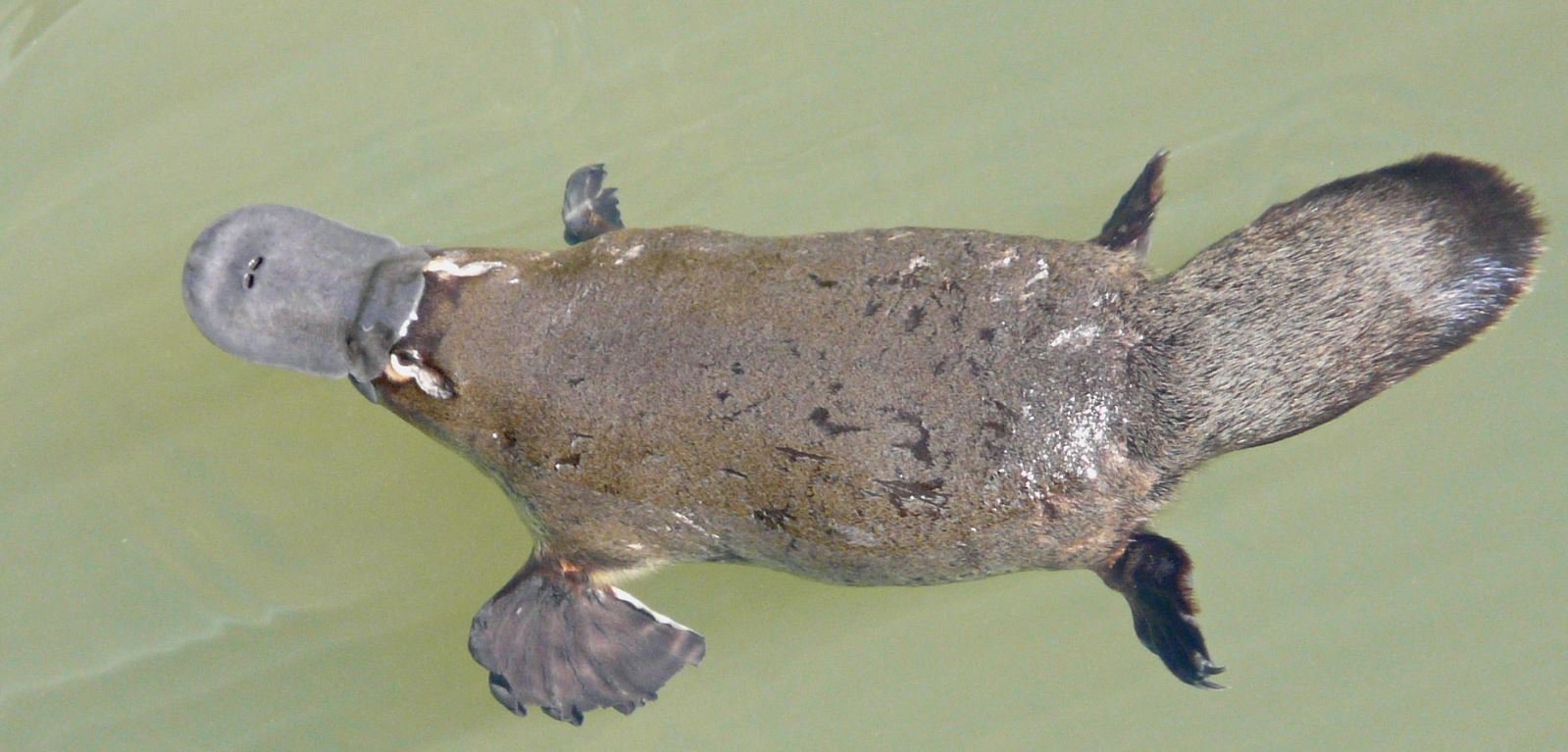What is a monotreme?
Monotremes are different from other mammals because they lay eggs and have no teats. The milk is provided for their young by being secreted by many pores on the female’s belly.
The platypus
Ornithorhynchus anatinus, is a unique Australian species. Along with echidnas, platypus are grouped in a separate order of mammals known as monotremes, which are distinguished from all other mammals because they lay eggs.
The platypus and echidna have both survived by occupying ecological niches.
The soft egg-laying habit of monotremes is a notable reptilian feature that has been kept in this group of mammals.
Like the platypus, the echidna has an electroreceptive system. While the platypus has 40,000 electroreceptors on its bill, echidnas have only 400-2,000 electroreceptors on their snouts.
The platypus has a leathery beak which works very well as a device for sifting small invertebrates from the bottom of a river bed. It is richly supplied with touch and electro- receptors that can detect weak currents emitted by the muscles of its prey.
The Platypus is the only Australian mammal known to be venomous. Males have a venomous spur above the heel of each hind leg which some scientists believe are used to assert dominance over other males during breeding season.
When first discovered, the unusual look of a Platypus caused considerable confusion and doubt amongst European naturalists and scientists, many of whom believed that the animal was a fake.

The platypus using its' leathery beak
Image: brisbane city council© creative commons
The echidna
The Short-beaked echidna, Tachyglossus aculeatus is the only species of echidna in Australia.
There are three species of Long-beaked echidnas in New Guinea ( Zaglossus attenboroughi, Zaglossus bartoni and Zaglossus bruijni)
Echidnas tongues are covered in sticky mucus that makes it easier for them to catch and snack on ants and termites, eating up to two kilograms in one meal.
The female echidna lays a single egg into a pouch on its belly. The hatchling is quite embryonic, lacking hindlimbs

The Short-beaked Echidna lives in forests and woodlands, heath, grasslands and arid environments.
Image: Kathy Atkinson© Australian Museum


